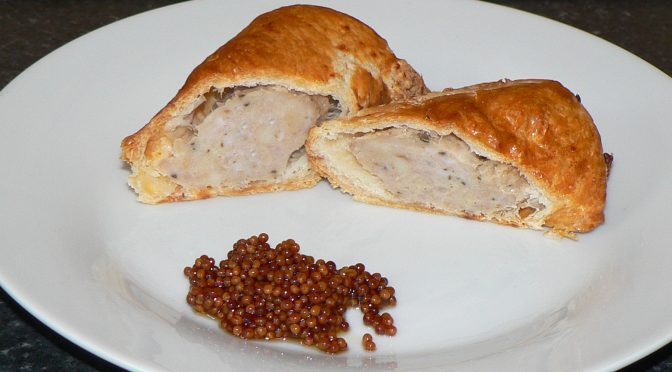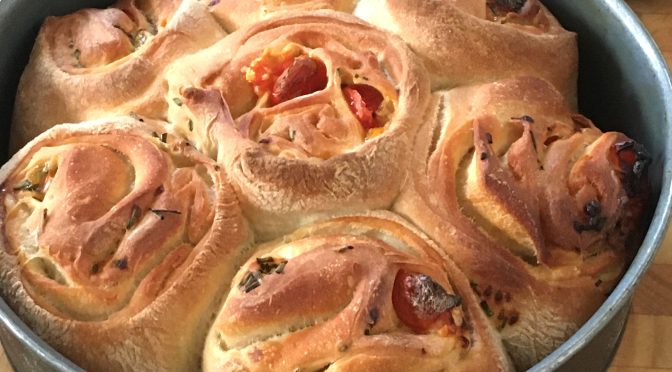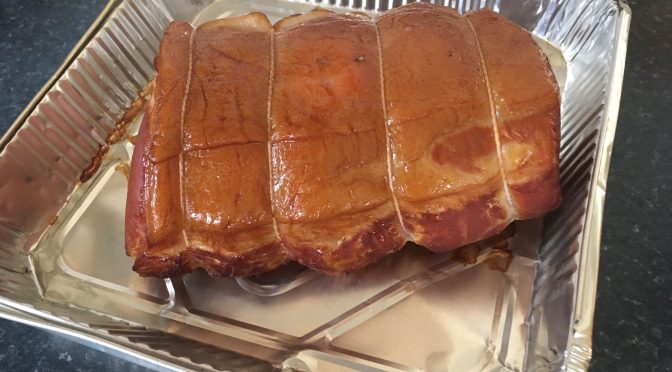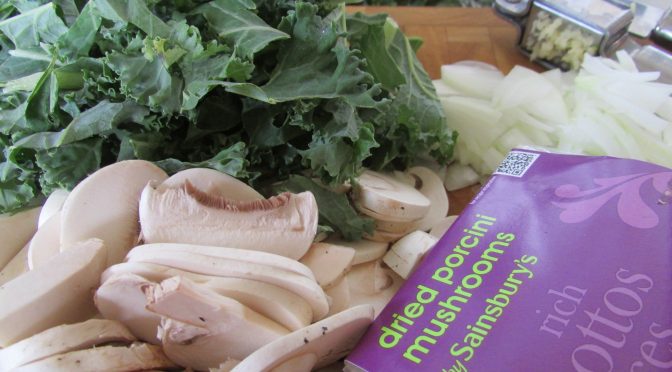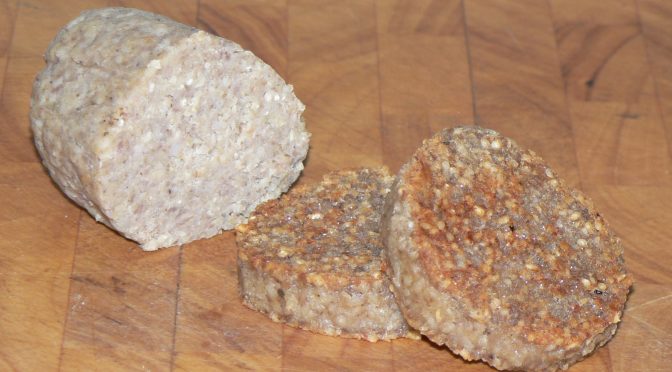This calculator converts US Measures to grams. To convert the other way, from grams to US measures, you can use this converter.
Continue reading Converting from US Measures to GramsAll posts by Phil
Universal Cure calculator
This cure calculator can be used for measured dry cures or equilibrium brine (wet) cures. Measured dry cures are also sometimes referred to as EQ Cures.
It is designed for the experienced curer – those who will know to adjust the meat weight for any bone. Those who realise that meat takes a very long time to reach equilibrium in an eq brine.
They will also be aware of curing safely and using a sufficiently strong brine to protect the meat whilst it is curing when using a brine cure.
The input to the form is in grams rather than lb and oz. This is for purely practical purposes; for example, 2.5% of 1000gm is far easier to calculate than 2.5% of 2lbs2oz. It also uses weight for all measurements; this is because the volumes of solids are variable.
To convert US measures to grams you can use our:
US measures to grams converter
Continue reading Universal Cure calculatorSausage Rolls
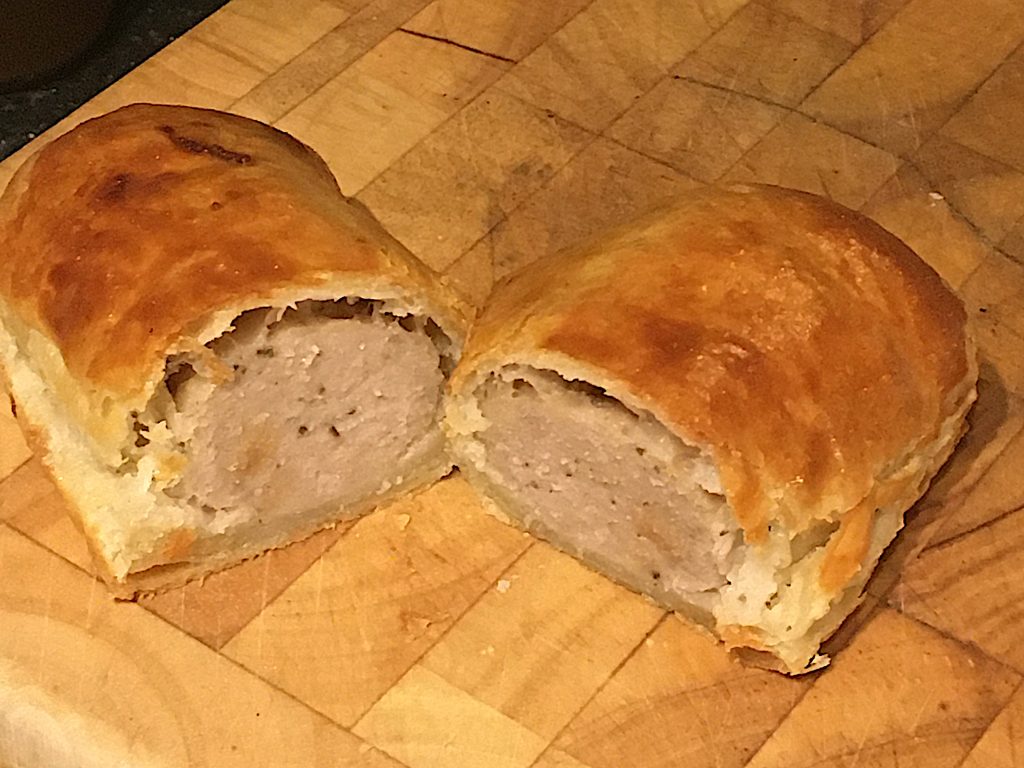
Having made the sausagemeat for rolls it’s a fairly simple task to make it into sausage rolls.
I prefer to use a rough puff pastry rather than a shortcrust or shop-bought puff pastry but these could also be used. I make the pastry using this quick rough puff pastry recipe.
I’ve dropped a clanger by not taking a photo of the sheet of pastry after it’s rolled out but I roll it to approx 250mm (10″) by 400mm (16 “). Square the edge off that’s nearest you. I will make 2 long rolls from this that I’ll then divide each one into 4 individual sausage rolls.
For approximately 100gm rolls use 170gm of sausage meat and roll pieces to form a long sausage to lay along the nearest edge. Then, lifting the pastry, roll it to just encase the meat. At this stage dampen the next inch or so of pastry with water (I think that water is better than egg wash for this) and roll the meat/pastry roll onto this. The roll can be cut away from the sheet at this stage.
Continue reading Sausage RollsSausagemeat For Rolls
I love a sausage roll but blimey, you kiss a few frogs before you find a prince! Too many are absolutely dire; the sausage meat is like meat paste and what is it with that pastry that’s neither short nor puff and is similar in texture to cardboard? I guess people tolerate it because they’re relatively cheap and they’re convenient.
As sausagemeat can be made without any fancy equipment they’re a great project for making at home. I would normally mince the pork myself to make these but to illustrate my point I’m using bought pork mince for these. You could get this from your butcher, or as in this case, the local supermarket. If it’s from your butcher ask for 80/20 visible lean. From the supermarket, buy the 20% fat pork mince, not the 5% fat one.
I assembled what I needed for the sausagemeat, most of the spices in the spice dabba won’t be used on this occasion but they do add a bit of colour to the photo!
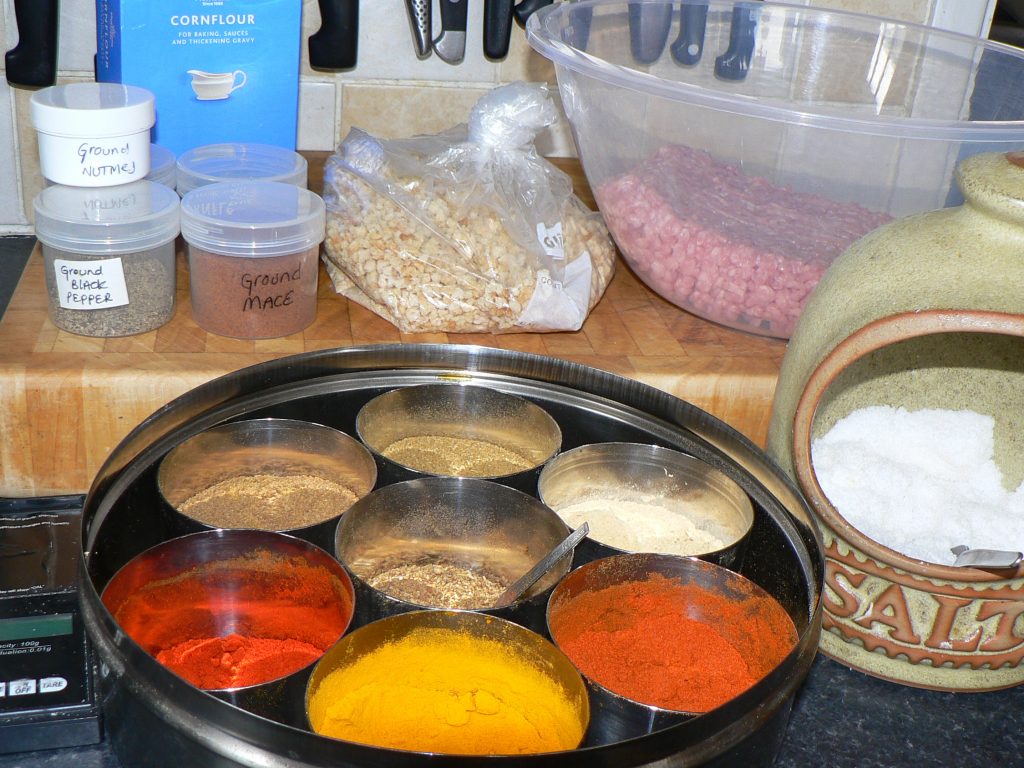
The ingredients for each kilogram of pork mince are:
280gm Water
180gm Rusk
22gm Cornflour
18gm Salt
4gm Ground white pepper
2gm Ground black pepper
1.5gm Ground nutmeg
1.5gm Ground ginger
1.5gm Ground coriander
0.5gm Ground mace
3gm Rubbed sage
To make things easier, there is a calculator at the end of this post.
Continue reading Sausagemeat For RollsPlaying with Dough – Tomato and Chive Rolls
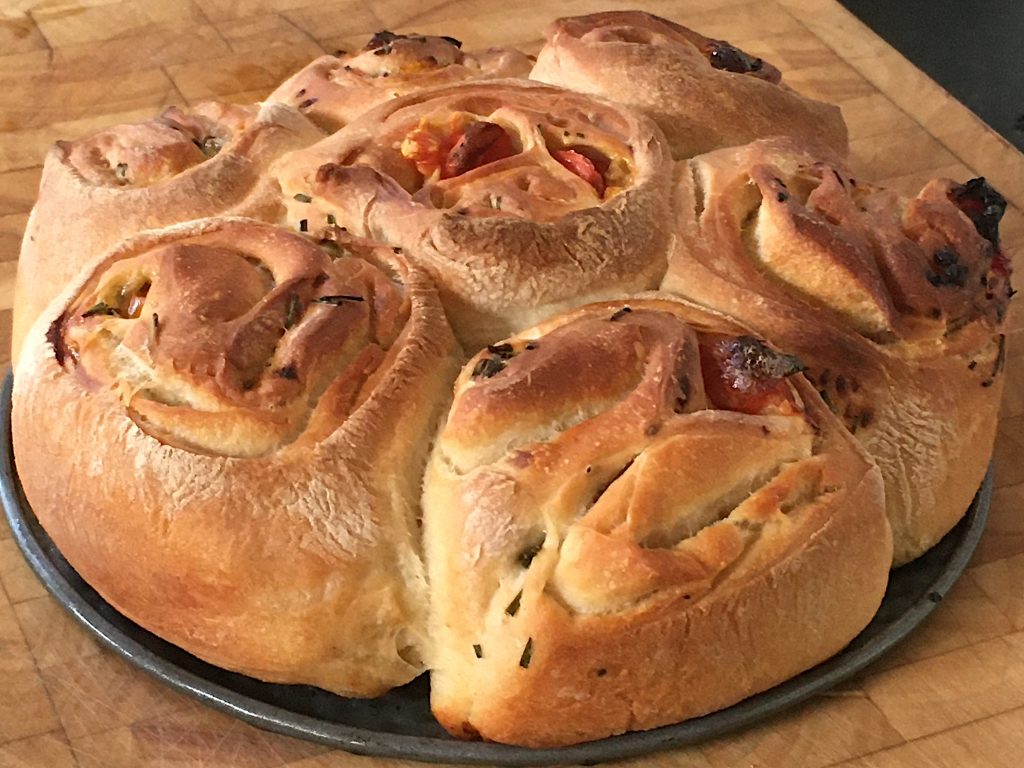
We have a small garden and grow tomatoes every summer. They taste so much better than shop-bought. We’ve got a few too many at the moment and as we’re out of bread it made sense to try and kill two birds with one stone. I was thinking along the lines of focaccia but then thought I’d have a play.
Continue reading Playing with Dough – Tomato and Chive RollsPâte sucrée (sweet shortcrust pastry) and Afternoon Tea
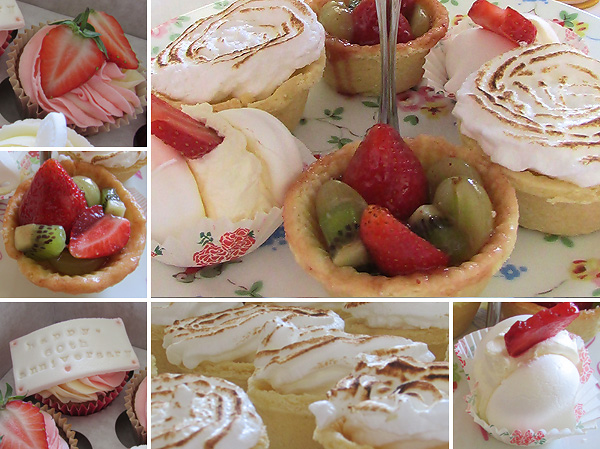
In 2014, I wrote:
Mum and Dad celebrated their Diamond (60th) Wedding Anniversary in 2014. As well as sending them to a local restaurant for a meal, we decided to have an afternoon tea.
For me, afternoon tea is lots of small patisserie and cake items; oh, and some token sandwiches beforehand. I’m not one for scones and cream as part of ‘afternoon tea’; they’re for other occasions when they can be enjoyed on their own. Now, we’re not ‘The Savoy’, or even ‘The Great British Bake Off’, so I choose just a small selection of simple things: individual lemon meringue pies, fruit tarts, and meringues, along with cupcakes made by my daughter Hannah. The meringue uses up the egg whites left after the yolks have been used for the pastry and lemon meringue filling. Savouries were cucumber, egg, ham, and cheese sandwiches, some even had the crusts cut off!
‘Ere, how come when it’s lemon meringue it’s a pie, but when it’s fruit, it’s a tart?
Never mind, what I do know is that with pies or tarts, it’s all about the pastry – it needs to be strong enough not to fall apart but melt-in-the-mouth when you eat it. My method may not be the proper way but it works and results in a pastry case that’s more like shortbread than pastry.
Continue reading Pâte sucrée (sweet shortcrust pastry) and Afternoon TeaKasseler Style Pork
Whilst I am a great believer in using locally produced meat from independent suppliers I’m also aware that many people don’t have the income to do this.
I hope to show with this project that you can still make some great products despite this. Many are cheaper than buying them from the supermarket. Yes, the quality may be better with meat produced to higher standards but good products can be made using meat produced on an industrial scale.
This is the piece of meat I bought from a local supermarket that sells pork produced in Britain. It’s around a kilogram of pork loin and cost £4.26 as it was discounted to £4 per kg.
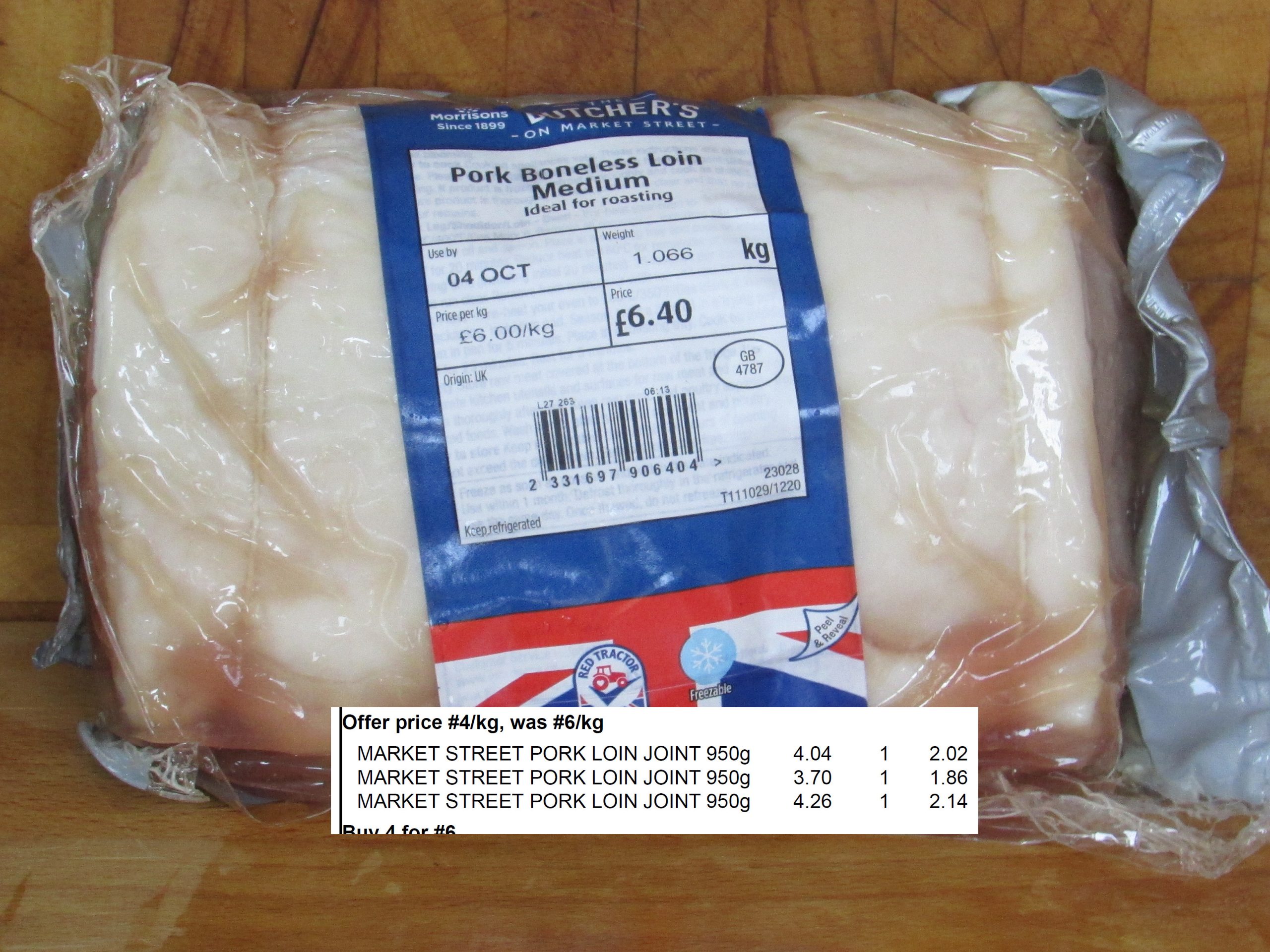
That still may seem like a lot of money to some but the meat it makes can be used instead of cured ham, fried as bacon or be cut into thick slices to use as pork steaks/bacon chops – all of which would be more expensive to buy.
In Germany, it’s called Kasseler and is usually cured with the bones still in; it’s served as bacon chops. Some online references talk of it being smoked, cooked and then stored in brine which seems an odd way of going about things! However the few recipes I can find all make it in the normal way.
Continue reading Kasseler Style PorkMushroom and Kale Soup
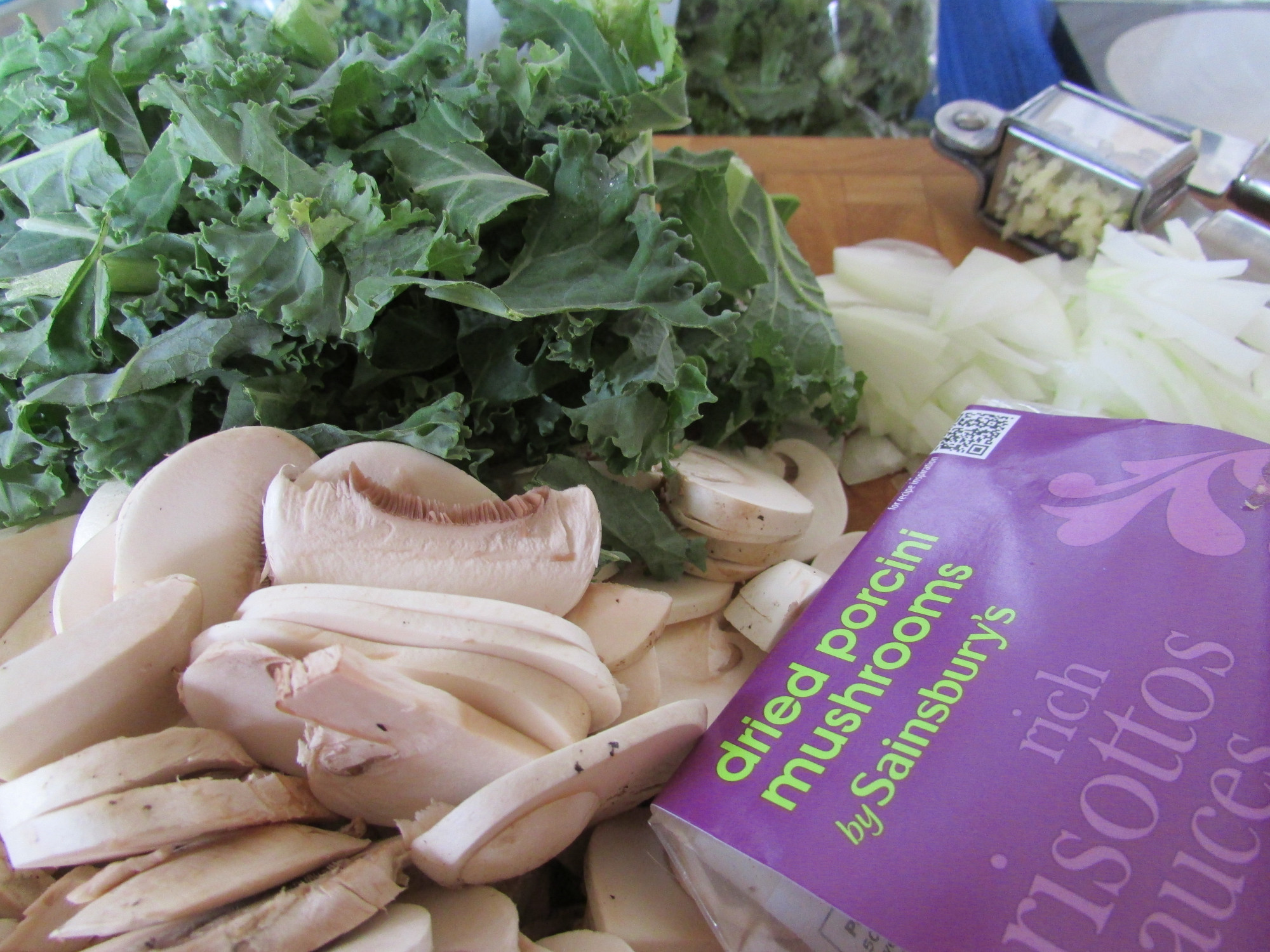
I’ve never been really happy with using water instead of stock for vegetarian soup but vegetable stock powder invariably gives a celery flavour to the whole soup and to be honest, even when I’ve made vegetable stock I’ve never been really happy with it.
However, I think that I’ve found the answer, at least for mushroom soups. Dried Porcini absolutely transforms them. I’d never bothered with it until now because of the price. But recently I’ve been looking for things that help to lower my calorie intake and have been surprised, it’s not always the lower-calorie items that are best. For example, you get far more ‘bang for your buck’ from high-calorie Stilton than a reduced calorie cheese. Just try it, tiny pieces of stilton will add flavour whereas you’d need double the amount of a lower-calorie product. Well, when I was thinking along these lines, I also realised that the same applies to using very small amounts of expensive items and there’s no doubt that Porcini is expensive: £60 – £80 per kilo but if you only use 10gm it’s only 60p or about 10p per bowl.
Continue reading Mushroom and Kale SoupHenderson’s Relish
Once in a while, you come across an ingredient that is so superb that you have to write about it. Sheffield’s Secret Weapon, Henderson’s Relish is one of those. How it managed to slip my attention when I spent 9 months of 1975 in Sheffield’s Lodgemoor Hospital, I just don’t know. It’s superb and well worth seeking out.
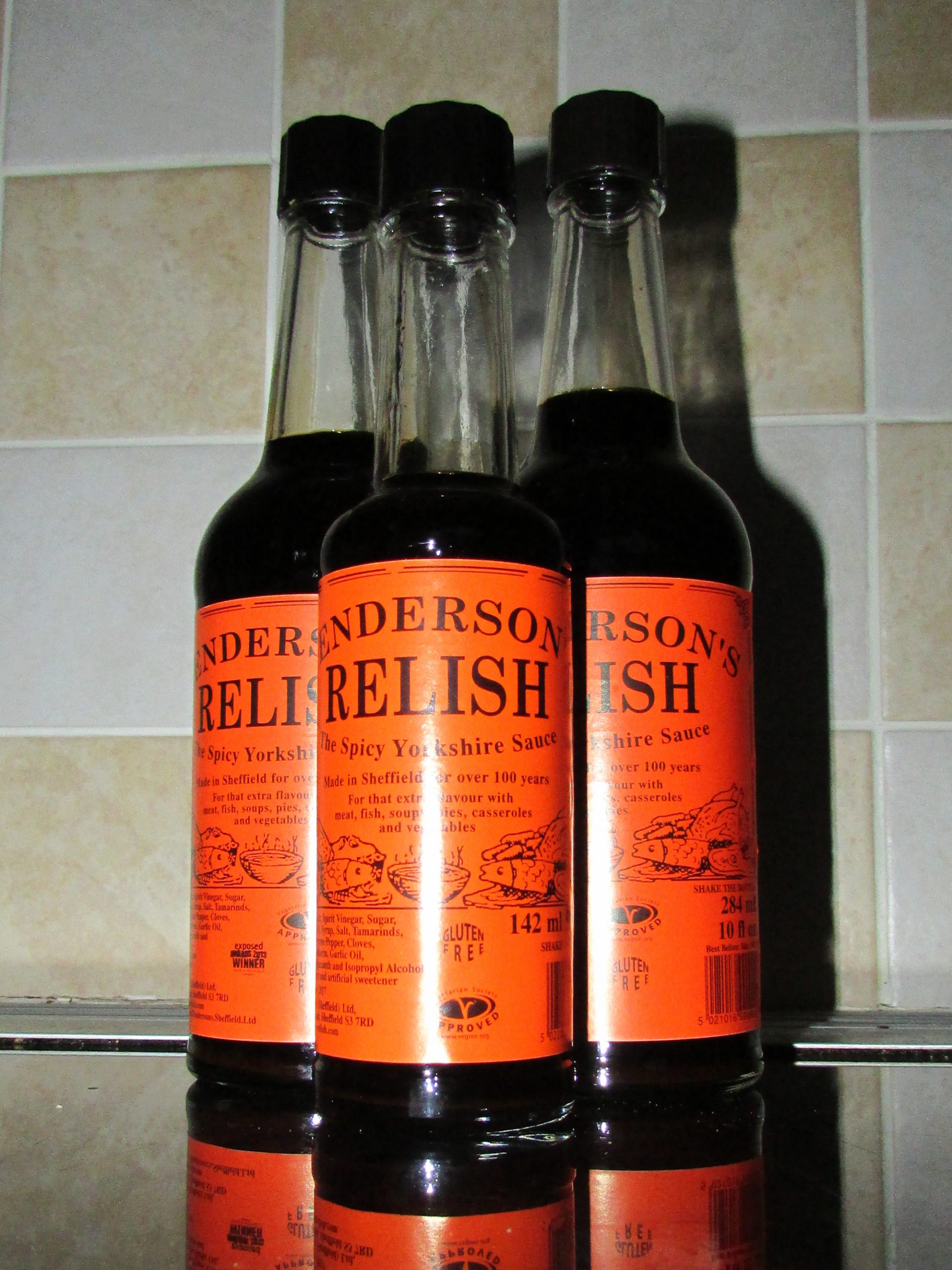
At first glance and taste, you’ll probably think that it’s a copy of Lea and Perrins famous Worcestershire sauce but you’ll soon realise that it’s subtlety different – not so harsh and aggressive a taste. Whereas Worcestershire sauce can dominate, Hendo’s compliments.
Henderson’s relish is also suitable for vegetarians and vegans.
As to its manufacture? Is it made in a factory on Parkway Rise, Sheffield, or does it drip from seams in the local coal mines as suggested by my Yorkshire mate Maurice. Now, I like to think that it comes from a secret well situated under the old Lodgemoor Hospital clock tower and that’s why the clock tower was left standing when the hospital was demolished!
In any case, it’s available from numerous shops in the Sheffield and North Derbyshire area and online from Morrisons and other online suppliers.
Irish White Pudding
Originally posted in 2009:
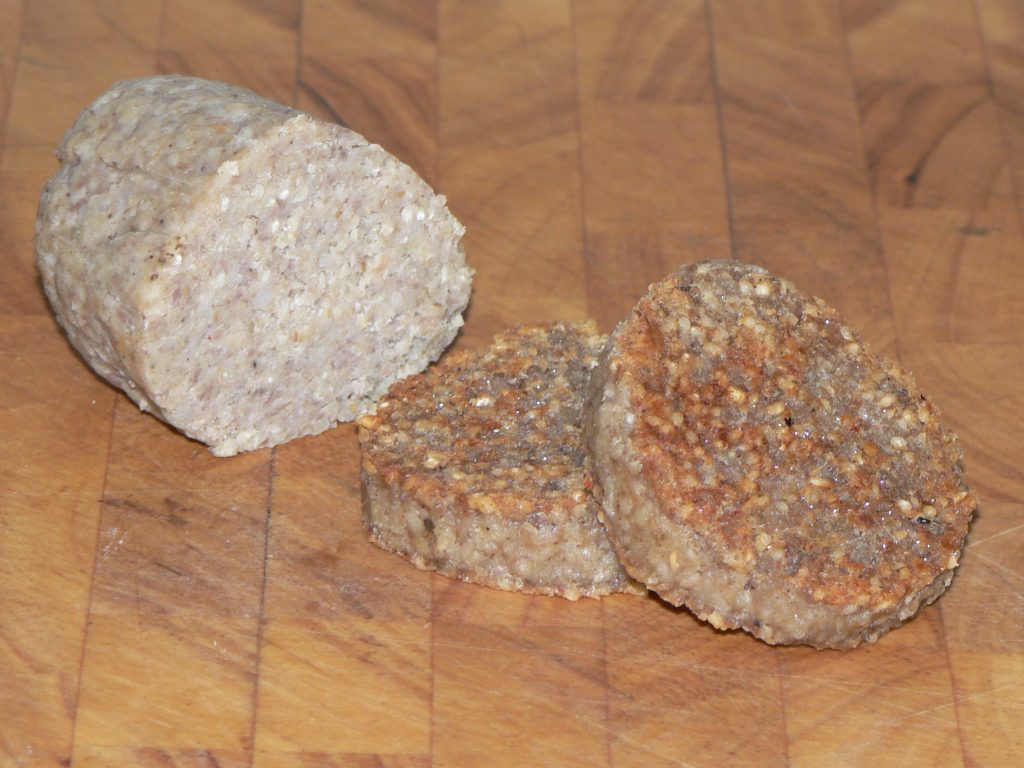
Some time back I posted about my trials of an Irish White Pudding recipe that I developed in collaboration with my forum mate John.
Now, I have to admit, I can take or leave these Irish delicacies but I believe that this recipe is as close to the commercial ones, as we can get. That is, the ones that I was sent which are made by Breeo Foods of Dublin and sold under the ‘Shaws’ brand name. They’re the ones on the left in this picture:
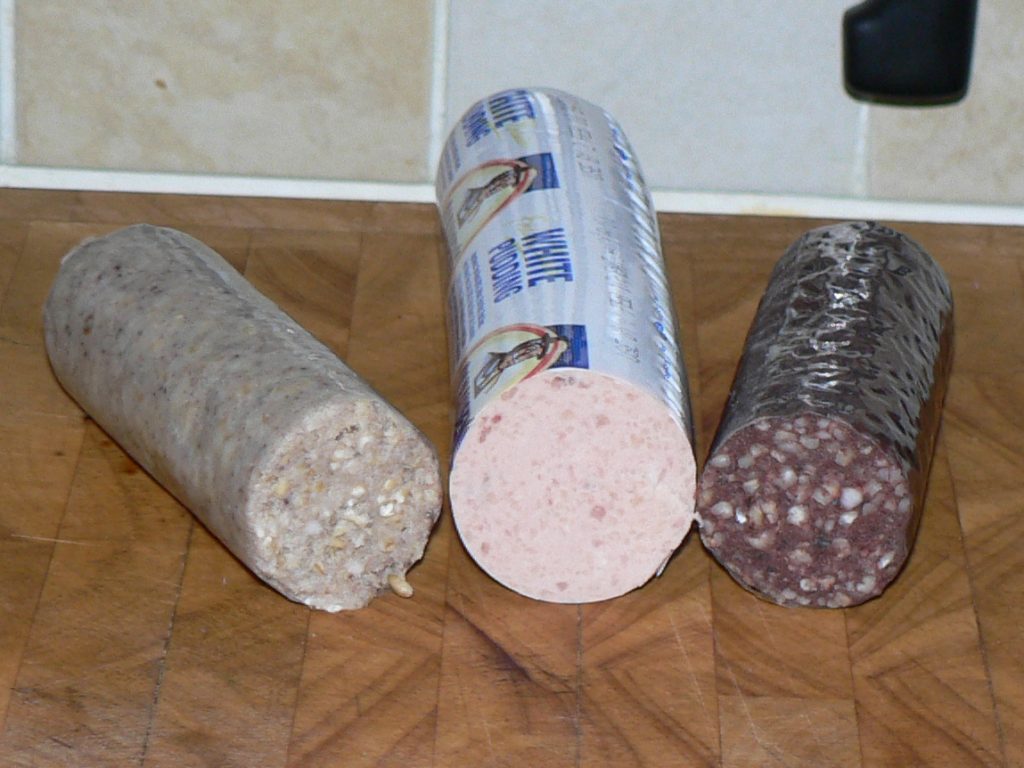
The final recipe stood up to the ‘John’s mother-in-law’ test and passed with flying colours.
Continue reading Irish White Pudding